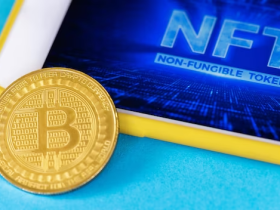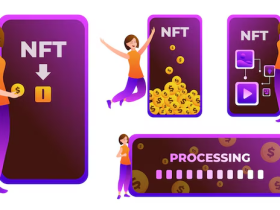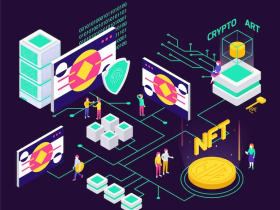We have written all you need to know about NFT Swap order scams, the difference between NFT swap order scams and NFT phishing scam, How fraudulent schemes deceive NFT traders through swap orders, and How to verify and avoid NFT swap orders in this comprehensive guide.
Let’s get started
An NFT Swap Order: What is It?
A transaction in which parties exchange nonfungible tokens (NFTs) is known as an NFT swap order.
An NFT is a unique digital asset that blockchain technology can validate. Every NFT is different from other cryptocurrencies like Bitcoin (BTC) or Ether (ETH), which are equivalent and have the same value. A vast variety of digital content, such as virtual real estate, music, movies, artwork, and more, can be represented by NFTs.
NFT swaps enable the transfer of NFT ownership rights between people or organizations.
In this procedure, ownership of one NFT is transferred from one party to another in exchange for another NFT, a combination of NFTs, cryptocurrencies, or other assets. Direct trades between parties are also an option, as are exchanges through specialized platforms and decentralized exchanges (DEXs) that facilitate NFT trading.
Typically, NFT swap orders are executed within predetermined parameters that have been mutually agreed upon by both parties. These parameters include details about the assets being traded, the quantities involved, and any additional terms or conditions. As the NFT market grows, swap orders will be necessary to facilitate the transfer of digital assets and collectibles between investors, artists, and collectors.
Explained: NFT Swap Order Scams
Scammers deceive victims into trading precious NFTs for worthless counterfeits in NFT swap order scams.
Custom trades, often known as NFT swap orders, entail directly trading one NFT for another (or a combination of NFTs and cryptocurrencies). Compared to conventional orders, which involve buying or selling an NFT in standard currency, swap orders offer more flexibility. This is usually the result of con artists misusing the irreversible nature of blockchain transactions, misleading buyers, or capitalizing on the excitement around NFTs.
The perpetrators of these scams often pose as trustworthy buyers or sellers and place swap orders, offering to swap NFTs with prospective victims. However, they could simply disappear after obtaining the precious NFT, or they might replace the unique NFT with a phony or inconsequential item.
To avoid falling for NFT swap order frauds, it is crucial to fully investigate the counterparty before agreeing to any transactions. Reputable NFT platforms and marketplaces with built-in verification systems can lessen the likelihood of transacting with dishonest individuals.
Users must use smart contracts and blockchain data to verify the ownership and legitimacy of the NFT before completing any swap trades. Being vigilant, exercising caution, and limiting transactions to dependable parties are essential strategies for avoiding NFT swap order scams in the developing digital asset market.
NFT Phishing Fraud Versus NFT Swap Order Scam
It’s critical to realize that NFT phishing and NFT swap order scams are not the same. False swap offers on marketplaces are used in NFT swap order frauds to deceive victims into losing particular NFTs. Phishing schemes targeting NFT wallets leverage phony websites or messages to obtain login credentials, with the ultimate goal of stealing all the assets stored in the compromised wallet.
How Swap Orders Are Used by Dishonest Tactics to Trick Nft Traders
Fraudulent schemes deceive NFT traders through swap orders by creating fake NFTs that visually mimic valuable ones and then proposing swaps that hide the real nature of the assets being traded.
Swap orders are frequently employed in complex fraud schemes that go after NFT traders. Fraudsters fabricate phony NFTs to look like pricey, well-known tokens. After that, they list these fake NFTs on reputable marketplaces, often using dubious tactics like data manipulation to give the listings the appearance of being real.
When a customer shows interest in a swap, the scammer immediately completes the order. Instead of sending the genuine NFT, they put the phony one in the buyer’s wallet. Due to the similarities, it happens often that the buyer doesn’t realize the difference and proceeds with the transaction believing they have received the genuine NFT.
The buyer may remain unaware of this fraud until they attempt to resell or verify the authenticity of the NFT, at which point they realize they have been taken advantage of. By then, the fraudster might have disappeared or concealed their identity, making it hard for the victim to pursue legal action.
To avoid being a victim of such frauds, NFT traders should thoroughly research dealers and verify the integrity of tokens before making transactions. Reputable marketplaces may lessen the chance of falling prey to fraudulent swap orders if they have stringent verification policies and cautious transaction practices.
Warning Signs to Spot NFT Swap Order Frauds
NFT swap order scams can be identified by a number of warning indicators, which help protect traders from con artists.
First of all, vendors who offer incredibly low prices for valuable NFTs should be avoided. Offers that seem too good to be true are typically fraudulent. You should move cautiously if the merchant appears pressed for time or rushes the closing process and doesn’t give you the time to finish your research.
Proceed with caution if the given NFT’s artwork or details (metadata) appear uncannily identical to the official collection. This might indicate that the NFT is a fake. Examine the details closely to confirm the validity. Additionally, proceed with caution when interacting with sellers who have a scant or questionable history of transactions on the marketplace or who refuse to provide additional proof of ownership upon request.
Lastly, if the seller insists on completing the transaction outside of reputable platforms or escrow services, that is a big red signal of potential fraud. It is always crucial to give top priority to completing transactions through reputable channels with buyer protection protocols in order to lower the danger of NFT swap order scams.
How to Check and Steer Clear of Nft Swap Orders
Verifying NFT swap orders is essential to avoiding falling into scams. Prior to making a purchase, review the seller’s history and previous transactions on the marketplace.
To make sure the smart contract address matches the official, verified address of the planned NFT collection, it must be closely examined. These addresses are typically provided by the project website or markets such as OpenSea.
Traders should never rely solely on photos since scammers may use pilfered or misleading photographs. Blockchain explorers like Etherscan allow for a more thorough examination of the smart contract’s details and display the NFT’s history, which may be useful in spotting any dubious activity. Because of their rigorous screening procedures and fraud prevention measures, selecting trustworthy marketplaces frequently offers an extra degree of security.
Beyond the basics, traders should take extra care to protect themselves from NFT swap order scams. Discussions among the community on forums or Discord can draw attention to red flags that aren’t always obvious from the exchange information alone. It is advisable to double check the smart contract’s age because ones that were created recently can point to a phony NFT. Additionally, one can avoid being a victim of a fake NFT by making sure there are no typos or other irregularities on the contract page. As such, one must be more vigilant than just accepting the NFT’s visual depiction in order to identify bogus NFT swap orders.










Leave a Reply